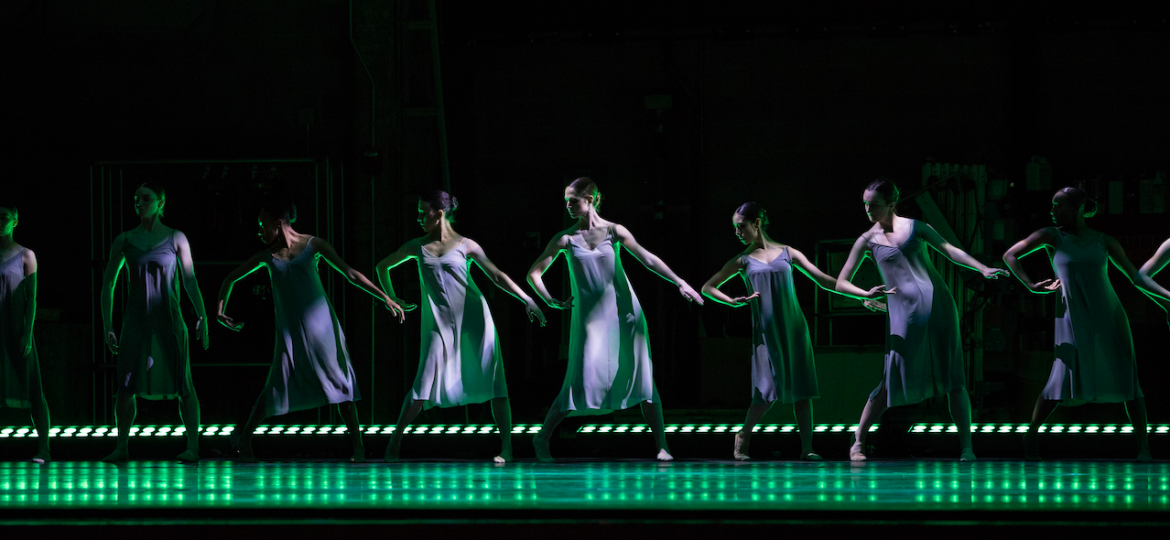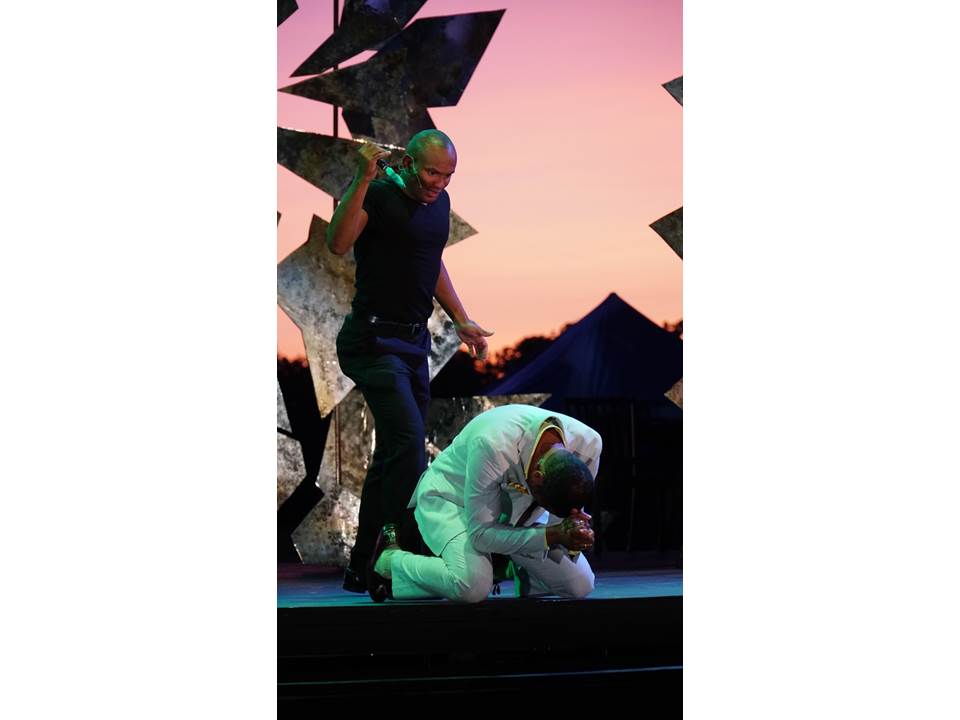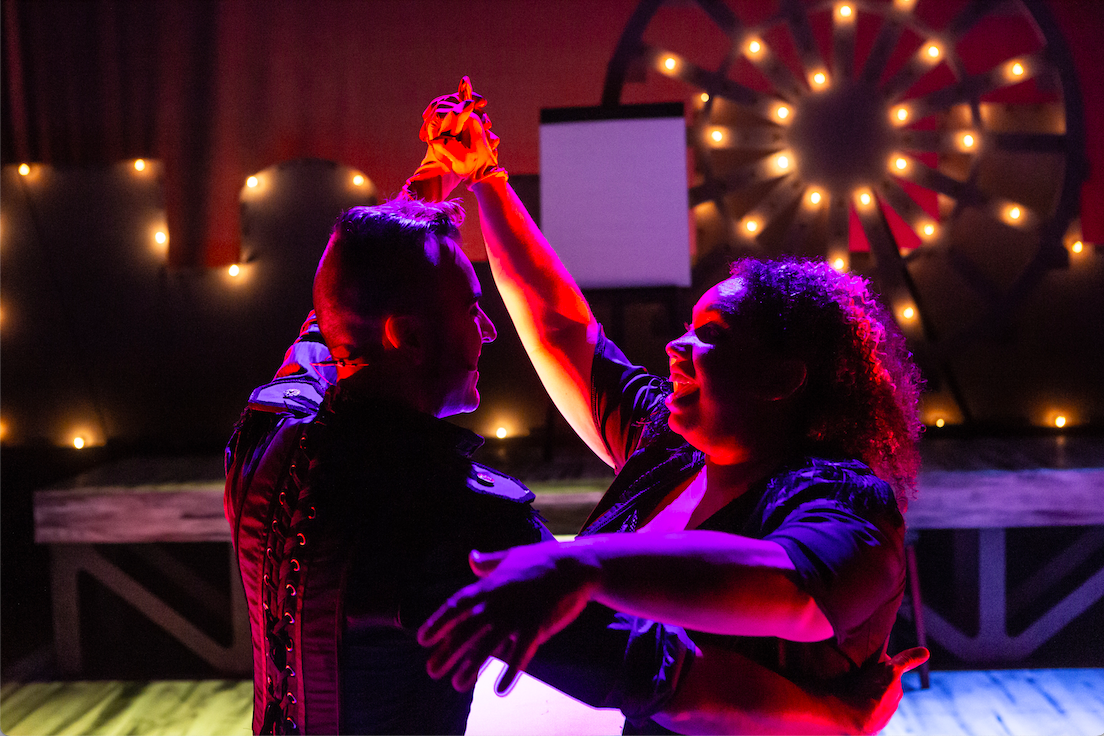
When our guest editor, Lauren Briggeman, told me that Indy’s go-to lighting designer was a woman, I knew immediately we had to talk to Laura Glover and showcase some of her work. I can’t wait to get to a show (once it’s safe to do so) to see her work live and in person.
Once you check out her talent, I think you will too.
How did you find your way into the world of lighting design?
Growing up, half of my immediate family was artistic. My mama was a community theatre actress as well as a painter and my middle brother is a playwright, director and sometime mime—and the other half designed and manufactured home lighting fixtures. So a love of art and an awareness of light was bred in me.

When I entered undergraduate school at American University in Washington, D.C., I took a stagecraft course and really liked the vibe of the people involved in theatre. My second semester, a course in lighting design was offered and I took it. I found that I had an innate understanding of how lighting works conceptually and artistically. Entering the professional theatrical world a few years later, I met two lighting designers who really believed in my artistic ability. They urged me to go to SUNY Purchase (now Purchase College) l where I received a much more detailed conceptual education, as well as my MFA.
I went on to have a dance lighting career in New York City as an associate lighting designer, touring internationally and nationally, with The Martha Graham Dance Company, Rioult, Paul Taylor 2 as well as designing a ton of downtown dance and theatre. I also took a gig with an Indianapolis based modern dance company, Dance Kaleidoscope. Thirty years later I am still designing for Dance Kaleidoscope as well as the Phoenix Theatre, the Indianapolis Shakespeare Company, Summit Performance Indianapolis as well as other professional and educational institutions.
Tell us a little about your process—I’m so fascinated.
Wow! You are asking me how I breathe! Lighting design begins with understanding what the given piece is about through discussion with directors or choreographers, when lighting dance. I allow those discussions to frame the beginning of my own conceptual viewpoint.
It’s all about thinking and imagination at this early point. That is followed up by artistic research. I love going to paintings for inspiration…visits to museums either live or via the Internet or through libraries. If it is a dance piece, I like to immerse myself into the music the choreographer is working with. Sharing this research and ideas with my fellow designers and directors is so important and necessary. The performing arts are all about collaboration!
The next step is to interpret how my lighting will be realized technically based upon the space we are performing in, the scenic parameters, the lighting inventory and how much time we have to rehearse. I develop a light plot (think of it as a technical map that tells you where the lights are hung), focus the hung lighting units and, finally, I get to sit down at a computer light board and program all of those lights to make the world that the performers live in for a few hours. I bring alive the visions in my mind through the use of color, angle and intensity. I often equate this process to using the biggest box of crayons at my disposal to create!
What are some of the biggest challenges in your field?
Lighting design is still a male-dominated field. Only about 20% of all lighting designers are women. The irony is that women hold the distinction of being very influential in the art.
Conceptual artistic lighting design was developed by Jean Rosenthal in the 1930s and 1940s; she worked with such artistic greats as Martha Graham, John Houseman and Orson Welles. Tharon Musser designed over 150 Broadway productions and was the first designer to work with a computer light board on A Chorus Line. Jennifer Tipton has worked with Paul Taylor Dance Company, American Ballet Theatre and on Broadway; she is the professor of lighting design at Yale University.

In my early days, I came up against opinions and attitudes that were a challenge to deal with, but I kept chipping away at the attitudes by being the best possible designer and colleague I could be. My understanding of my own work was (and still is) very solid, my approach to the work I share with my colleagues has always been open. I try not to see gender in any role and work very hard at treating all with the same professionalism, friendship and sensibility as I would for any human. I support the women in my professional life by being upfront and treating them equally.
I have been blessed that the theatrical and performing arts community here in Indianapolis has been open to the way I collaborate, work and perform. My advice on breaking glass ceilings? Do your freaking best, maintain open communication with your colleagues and be understanding and forthright.

What has your pivot looked like over the past year?
Again, I am blessed on a professional level. Dance Kaleidoscope (my main employer) has kept the dancers and staff employed and performing over this pandemic year through taping our season and doing studio performances for very small, socially distant audiences.
I have maintained my relationships with the theatre companies by participating in production meetings for possible future performances and through simple discussion. It is frustrating to not have the creative outlet I usually have, but I still do my research and turn to other venues for creativity such as my own home, garden and cooking. Patience in this life we are currently leading is what I have learned. That and to enjoy the simple things like a purring kitten laying across my leg, the feel of my husband’s hand in mine and the taste of good food cooked for loved ones.
What does the future look like?
I am looking forward to the theaters opening up again and being able to collaborate with my friends. Unfortunately, I am not at liberty to name these projects quite yet. Dance Kaleidoscope will be performing a full season, though we do not yet know the dates, if we will have live audiences or virtual ones or both!

Abby Gardner is Indy Maven’s executive editor.



